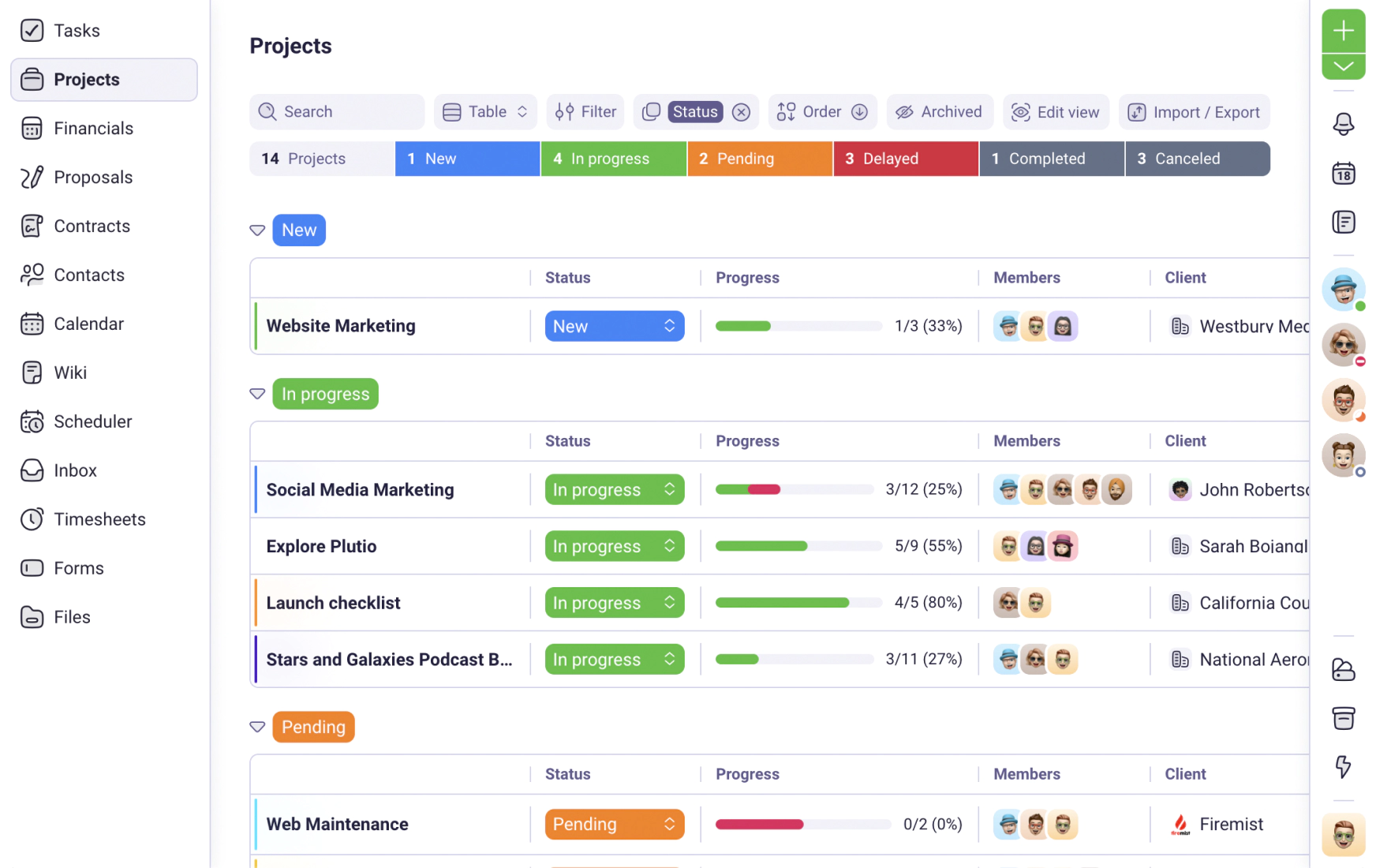We use cookies to personalise and enhance your experience.
Setting out freelance client expectations, successfully at least, involves a bit more than just agreeing on a price for your talents. The relationship between client and freelancer is just that, a relationship. It’s dynamic, it takes TLC, and above all, it requires excellent communication skills in all areas, especially when it comes to setting boundaries.
But the vast landscape of freelance work can prove somewhat overwhelming for the fierce budding freelancer. Jumping into freelancing at the deep end without careful consideration of your needs and those of your client can lead to unfulfilled briefs, a breakdown in communication, and, you guessed it, unmanaged work-related productivity expectations.
Learning to manage your clients’ expectations is an integral part of understanding your own limits as a freelancer. Clients may want you to meet urgent deadlines, perform additional tasks outside of contract terms, and multitask too many things at once.
However, by learning to set the tone of your relationship through honesty, communication, and trust, you can and will succeed. But more than this, equipping yourself with untapped tech resources you might not think to suit the freelance worker, like call logs and call history, can make a real difference.
But all of this is a lot easier said than done. How can you set and maintain expectations in a way that promotes an excellent partnership while remaining in control? It’s not impossible, I promise. With a bit of guidance, you can help your freelance clients succeed while you grow, and it all comes down to maintaining expectations.
However, by learning to set the tone of your relationship through honesty, communication, and trust, you can and will succeed. But more than this, equipping yourself with untapped tech resources you might not think to suit the freelance worker, like call logs and call history, can make a real difference.
But all of this is a lot easier said than done. How can you set and maintain expectations in a way that promotes an excellent partnership while remaining in control? It’s not impossible, I promise. With a bit of guidance, you can help your freelance clients succeed while you grow, and it all comes down to maintaining expectations.
Clear Communication Is Key
Before you even enter into any form of freelance agreement, it’s imperative to discuss every detail with your client. This requires crystal clear communication. Sometimes the prospect of a great new opportunity clouds our more rational judgment, but understanding and communicating upfront will create a much healthier business relationship in the long run.
It’s crucial to outline even the tiny terms of your agreement to ensure that:
- You’re able to meet all of the client’s criteria.
- You have a good understanding of precisely what’s expected of you.
- You have a chance to ask any questions.
- You agree on your project’s deadline.
- You understand any milestones that the client wants to observe along the way.
- You’re aware of how much creative input your client wants to have.
Not only does hashing out all of these details ensure clear communication from the start, but it can also help establish how the client prefers to communicate. So when you’re going into details about the fundamentals like invoicing and deadlines, don’t forget the small stuff.
Make sure you set out timelines, how often your client wants status reports or a look at your progress, the frequency of meetings, and calendar milestones. Not only will this keep you completely on track, but it’ll ensure that your client doesn’t have to chase you for follow-ups. And this, of course, will foster a positive relationship.
If accounting for all of these tiny details sounds a bit overwhelming, don’t worry. There are many tools to help you out, like a modern communications platform, for example. Cloud-based platforms are ideal for today’s freelancers, making it possible to keep communication seamless wherever you are.
Let Technology Help You
Managing freelance client expectations from the budding start to triumphant finish of your project requires dedication to your agreement and the milestones therein. But there’s no reason to juggle all of this with a thousand and one sticky notes littering your workspace, and that’s where project management tools come into play.
Project management tools aren’t just great for big businesses; they can help freelancers too. They’ll help you remain organized, set deadlines, maintain the projects you’re working on more effectively, create transparency, and keep track of your progress.
At their very core, project management tools are designed to help maintain realistic expectations between parties involved in a given project. More than this, the lightning-fast pace of freelancing means that it’s imperative for small businesses to go digital. The ideal software will allow you to:
- Manage your time
- Track projects
- Schedule meetings and catch-ups
- View resource allocation clearly
- Communicate and collaborate
- Document items and share documents
Seriously, there’s no reason not to let tech help you. The modern freelancing landscape is blossoming with business communication tools suited to every need you may have. Not only can they enhance productivity and efficiency, but they can also connect potentially far-flung teams and build an environment of openness and collaboration.
Set Out Clear Expectations of Timelines
Perhaps the most important lesson for new freelancers is to manage time effectively. It’s understandable to want to do the best job you can, especially when you’re building a gleaming reputation. It’s also understandable that your client may have different and ultimately unmanaged expectations if you don’t set suitable time boundaries.
Agree Project Terms Upfront
Global catastrophes aside, freelancing is on the rise. With agile working also increasing, this trend probably won’t slow down any time soon. It’s never been more important to stand out as the graceful freelancing professional you are. One surefire way to accomplish this is to set out terms upfront with potential clients.

By agreeing terms at the outset, clients will develop a sense of your working style. But more than this, it will demonstrate that you’ve put thought and planning into their project already. This will help build a positive client relationship because it will outline what’s expected of everyone, and nothing will be left for speculation or interpretation.
Share Your Progress
In fields like PR, call centers, or strategic partnerships like freelancing, speed and quality must unite perfectly. Whether it’s finishing that client’s project or hitting that call center KPI, you must communicate your progress, even if things aren’t going exactly to plan.
And, to communicate progress, it’s imperative to track it. Utilizing software to capture data, for example, can prove especially valuable. Documenting information during or after phone calls for reference later, such as with a sales call report, is a great way to track crucial details. Sharing your documentation makes it easy to maintain visibility and allow your client to understand your progress.
As we all know, the last thing a client wants to hear is that you haven’t met your deadline, and we’ve established that communication is the key to managing expectations. So share any progress that you’ve made, and obstacles you are encountering as it’s happening.
Freelancing isn’t just about the great work you produce; it’s also about how you handle challenges. How you respond to your missed or soon-to-be missed deadlines will have a major impact on your business and your client relationships. Remaining transparent in times of strife will show clients that you can own and manage the good and bad.
In the End, Stay True to You
The best way to manage your freelance client expectations is by staying true to yourself. Freelancing is a precarious venture when you’re first starting out. It may seem easy to bend and yield to requests even if they’re more work than we think we can manage. But agreeing to too much can affect your focus, work quality, and of course, those all-important client expectations.
This is precisely why finding ways to be organized and managing client’s expectations effectively is so important; it can help you achieve an honest idea of your work outcomes. Not only that, being realistic with yourself will help you appear more professional to your freelance clients.
So take advantage of software and remember that there are many, many online tools designed for freelance content writers that can help you push yourself to new heights. But, in the end, remember who you are. By setting your boundaries and remaining truthful and honest, aligning with and even exceeding your freelance client expectations will be a breeze.
Author:
Jessica Day is the Senior Director for Marketing Strategy at Dialpad, a modern business communications platform that offers a one-of-a-kind hosted contact center—turning conversations into opportunities. Jessica is an expert in collaborating with multifunctional teams to execute and optimize marketing efforts, for both company and client campaigns. Here is her LinkedIn.
Have you tried Plutio yet?
The only app you need to run your business and get work done.
Try Plutio for FREESupercharge your business
The complete toolkit to run your business
The intuitive all-in-one solution to manage and collaborate on projects, share files, build forms, create proposals, get paid, and automate your workflow.
No credit card required


